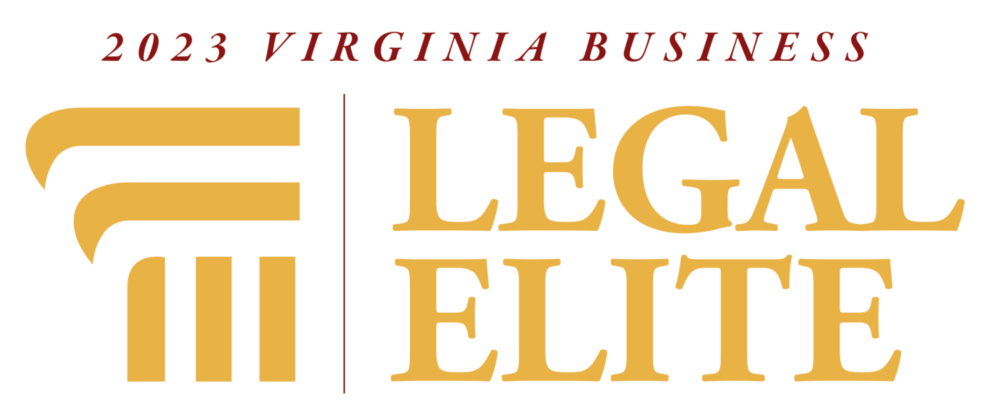Summary
The Court of Appeals for the Federal Circuit issued three decisions in the first quarter of this year regarding patent-based Section 337 determinations from the U.S. International Trade Commission (ITC), Broadcom Corporation v. ITC, DBN Holding v. ITC, and Kyocera Senco Brands Inc. v. ITC. Two decisions concern issues that are specific to the ITC’s Section 337 jurisdiction; the third decision treats means-plus-function claim limitations, an issue which will interest all patent practitioners.
First, Broadcom teaches us that an ITC complainant must anticipate the twists and turns that the evidentiary record and the trial judge’s claim construction might take over the course of an investigation, to be sure that there is proof of at least one domestic product that is covered by at least one claim of the patent-in-suit. Second, DBN shows that the ITC is serious and stands ready to assess civil penalties against those who would violate its orders. And third, the ITC reminded us in Kyocera that means-plus-function limitations often lurk in claims that recite nonce words like “member” and “unit.”
I. Technical Prong of the Domestic Industry Requirement – Broadcom
To establish that imported products violate Section 337, a patentee must show that the accused imports infringe its patent and successfully defend the validity and enforceability of that patent against any challenges by the importer. The patentee must also show that there is a domestic “relating to the articles protected by the patent . . . exists or is in the process of being established” in the United States (“the technical prong”) and that this domestic industry is “significant” or “substantial” according to the ITC’s caselaw defining those statutory terms (“the economic prong”). 19 U.S.C. § 1337(a)(2) & (3).
Disputes regarding domestic industry usually involve the economic prong, but in the Federal Circuit‘s decision in Broadcom Corporation v. ITC (2022 U.S. App. LEXIS 5951 (March 8, 2022)), the debate was over the technical prong.
The patentee had argued at trial that it satisfied the technical prong because it works with customers to integrate its asserted domestic device with external memory to enable retrieval and execution of the “clock tree driver” firmware. The ITC’s trial judge found, however, that the patentee had failed to identify any specific external memory that contained the “clock tree driver,” and therefor failed to offer an actual article protected by the patent, as is needed for the technical prong.
The Commission also found that Broadcom had failed to identify either specific integration of the domestic device and the “clock tree driver” firmware or a specific location in which the firmware was stored. The Commission explained that because there was no actual integration of the SoC and “clock tree driver,” Broadcom had offered only a hypothetical device that did not satisfy the claim limitations in question and therefore did not meet the technical prong of the domestic industry requirement.
The Court of Appeals agreed with the Commission that Broadcom failed to satisfy the technical requirement, citing its earlier decision in Microsoft Corp. v. ITC, 731 F.2d 1354 (Fed. Cir. 2013). There, the asserted patent dealt with server-client communications, in which the client application was run on a mobile phone manufactured by the patentee’s customers. The patentee supplied a mobile operating system to its customers, but it failed to show that any such client applications were in fact implemented on third-party mobile devices. The Federal Circuit therefore concluded that the patentee had not satisfied the technical prong of the domestic industry requirement.
As in Microsoft, the Federal Circuit found that the patentee in Broadcom had failed to identify either a specific integration of the domestic industry device and the “clock tree driver” firmware or a specific location in which the firmware was stored. Broadcom does not challenge this finding, and instead introduces new theories that the Com- mission properly deemed waived. Because the patentee had failed to identify an actual article that practices claimed invention, the Federal Circuit affirmed the Commission’s determination that the patentee had failed to satisfy the domestic industry requirement of Section 337.
In summary, to meet the technical prong, the Complainant must establish a specific domestic industry article that is covered by one or more claims of the patent, supported by direct evidence, for example relevant source code, test data, and/or other specific evidence. Expert testimony on the operation of the domestic industry’s source code or the operation of its device, is insufficient to satisfy the technical prong in the absence of direct evidence of an actual domestic industry device that is within the scope of the patent.
One pitfall for the patentee on this point is that the ITC’s trial judge, the Commission itself, and the Federal Circuit are all free to adopt a claim construction that differs from the one proposed by the patentee. In Certain Mobile Devices with Certain Multifunction Emulators, Inv. 337-TA-1170, Initial Determination, at 61-62 (March 16, 2021), the ITC’s trial judge found that “for domestic industry technical prong [the patentee] offers only evidence consistent with its erroneous claim construction proposal. … [with] no evidence in its post-hearing briefs regarding the shape of any alleged waveforms.” Patentees must therefore take care to include in the record evidence that the domestic industry practices the claimed invention, even under alternative claim constructions that might be adopted by the agency or the appellate court.
II. Civil Penalties – DBN
The ITC is a popular choice for patentees attracted by its power to exclude from entry into the United States Respondents’ infringing imports; in some cases, this exclusion from importation extends to the infringing imports of companies that were not even parties to the ITC’s investigation.
In many investigations, however, a Respondent agrees to the ITC’s issuing a Consent Order by which the Respondent promises not to import into, or sell within, the United States infringing products, in exchange for the ITC’s dismissing that Respondent from the investigation. It is in essence a contract between the Commission and Respondent. What happens when the Respondent breaches that contract? In a handful of recent cases, the ITC has issued civil penalties against the transgressing Respondent.
This power of the ITC to enforce its Consent Orders through fines was the subject of the Federal Circuit’s decision in DBN Holding v. ITC, 20-2342, (March 1, 2022). In the ITC’s original investigation, Respondent DNB entered into a Consent Order with the Commission, which included the following terms:
1. Upon entry of the proposed Consent Order, [DBN] shall not import into the United States, sell for importation into the United States, or sell or offer for sale within the United States after importation any two-way global satellite communication devices, system, and components thereof, that infringe claims 1, 2, 5, 10–12, and 34 of the ’380 Patent after April 1, 2013, until the expiration, invalidation, and/or unenforceability of the ’380 Patent.
2. [DBN] shall be precluded from seeking judicial review or otherwise challenging or contesting the validity of this Consent Order. . . .
4. The Consent Order shall not apply with respect to any claim of any intellectual property right that has expired or been found or adjudicated invalid or unenforceable by the [ITC] or a court or agency of competent jurisdiction, provided that such finding or judgment has become final and non-reviewable.
Thus, the Respondent promised not to infringe the patent, but this promise included the proviso that it would not apply to any patent that had been finally adjudicated to be “invalid or unenforceable.”
In a subsequent proceeding, the ITC found that the Respondent had breached the Consent Agreement by continuing to infringe the patent, and it assessed a civil penalty of $6,242,500 against the Respondent. And in a later parallel infringement action, a District Court held the patent to be invalid.
Armed with this invalidity holding, the Respondent petitioned the ITC under 19 C.F.R. §§ 210.76(a)(1) &(2) to rescind its penalty assessment, but the Commission denied Respondent’s petition. On appeal of the denial, the Federal Circuit instructed the ITC to determine “whether to modify or rescind the civil penalty pursuant to 19 C.F.R. § 210.76 based on the final judgment of invalidity” of the patent asserted in the underlying Section 3371 investigation.2 DBN Holding, Inc. v. Int’l Trade Comm’n, 755 F. App’x 993, 998 (Fed. Cir. 2018). On remand, the ITC determined that the civil penalty did not require modification or rescission and therefore denied the petition a second time.
Again, the Respondent appealed, this time arguing that the ITC had abused its discretion and relying on Certain Neodymium-Iron-Boron Magnets, Magnet Alloys, and Articles Containing Same, Inv. No. 337-TA-372 (October 1999) (“Magnets”). In that investigation, the ITC rescinded a civil penalty for a Respondent’s importation of infringing products in contravention of a Consent Order. The ITC did so because the parties had agreed to a retroactive license and had filed a joint motion at the ITC to vacate the civil penalty. The Federal Circuit found that the Magnets decision did not apply and concluded that the Respondent’s prior actions were not acts of infringement because of the retroactive nature of the parties’ settlement.
The Federal Circuit explained that the present case differs from the facts of Magnets because the Respondent’s acts in “violation of the consent order were never authorized by the ITC or the complainant in the underlying Section 337 investigation.”
Still, the significance of this case is not in the Federal Circuit’s legal reasoning, but in the willingness of the ITC to impose substantial civil penalties to enforce its Consent Orders. This will likely increase the ITC’s appeal to patentees.
III. Means-Plus-Function Limitations – Kyocera
The Federal Circuit’s decision this January in Kyocera Senco Brands Inc. v. ITC vacated and remanded the ITC’s finding of a violation of Section 337 in Certain Gas Spring Nailer Products and Components Thereof (Inv. No. 337-TA-1082).
The Commission had found that the patent was valid and infringed, and therefore issued a limited exclusion order and a cease-and-desist order against the accused imports. The key dispute between the parties was whether the “lifter member” recited in the claims is a means-plus-function limitation under 35 U.S.C. § 112 ¶ 6. The Commission concluded it is not and construed the claimed “lifter member” to mean a “rotatable component having lifting pins on its face surface.”
On appeal, the Federal Circuit agreed with the Respondent, concluding that the Commission had erred by not applying 35 U.S.C. § 112 ¶ 6 to the “lifter member” limitation. Even though the limitation does not include the word “means,” it does not recite sufficiently definite structure, so that the presumption against § 112 ¶ 6 is overcome.
The Federal Circuit explained that a person of ordinary skill in the art would not understand the claimed “lifter member” to have “a sufficiently definite meaning as the name for a structure.” By itself, the phrase fails to connote structure. Rather, it is a non-structural generic placeholder (i.e., “member”) modified by functional language, (i.e., “lifting”). The claim recites in relevant part:
A method for controlling a fastener driving tool, said method comprising:
(a) providing a fastener driving tool that includes . . . (vi) a prime mover that moves a lifter member which moves a driver member away from an exit end of the mechanism . . .
(d) actuating said prime mover, thereby moving said lifter member and causing said driver member to move away from said exit end toward a ready position.
The Federal Circuit determined that this wording
requires the prime mover to move the lifter member and describes the lifter member’s function as lifting the driver member. It does not specify whether or how the prime mover is connected to the lifter member. Nor does the description of the lifter member’s function add any structural detail. The only thing a skilled artisan could glean from the claim language is that the lifter member is moved by the prime mover and lifts the driver member. That is a purely functional description.
The Court added that “nothing in the written description provides a clear and unambiguous definition of “lifter member.”
The Federal Circuit therefore concluded that § 112 ¶ 6 applies to the “lifter member” limitation, and that it is to be construed to cover only “the structure, materials, or acts described in the specification as corresponding to the claimed function and equivalents thereof.” Since the parties had not briefed which disclosed structures, if any, correspond to the claimed “lifter member,” the Federal Circuit remanded the case to the Commission for further consideration.









